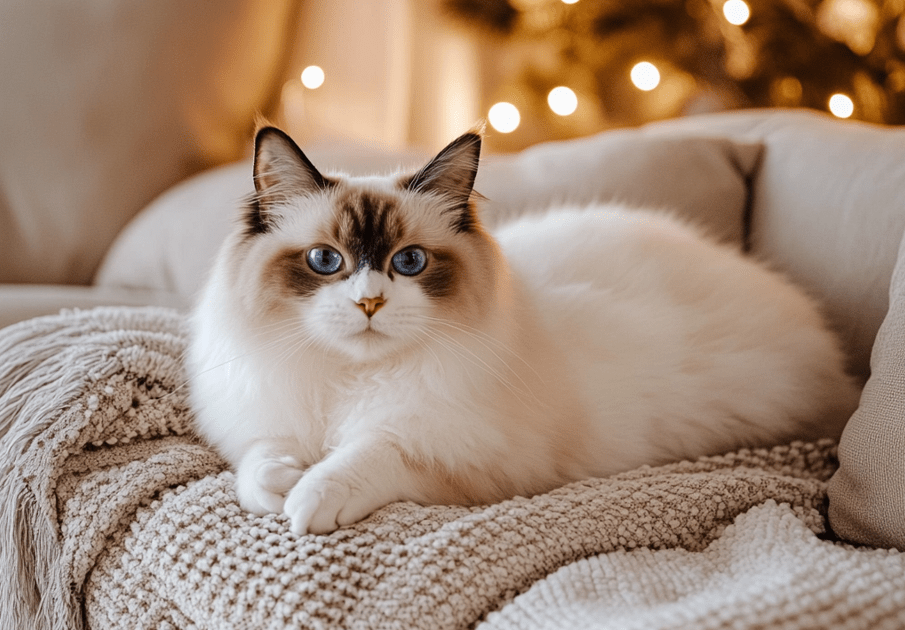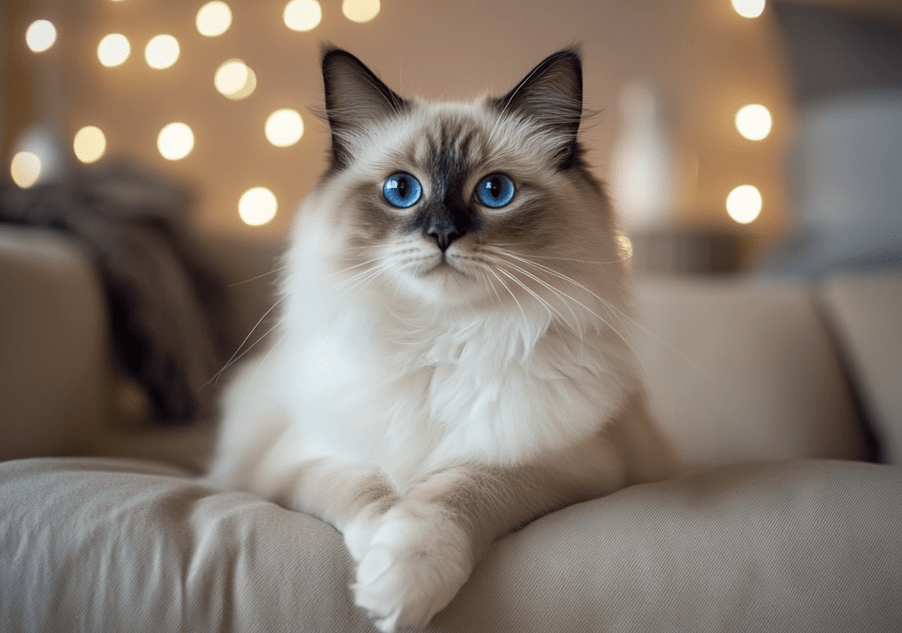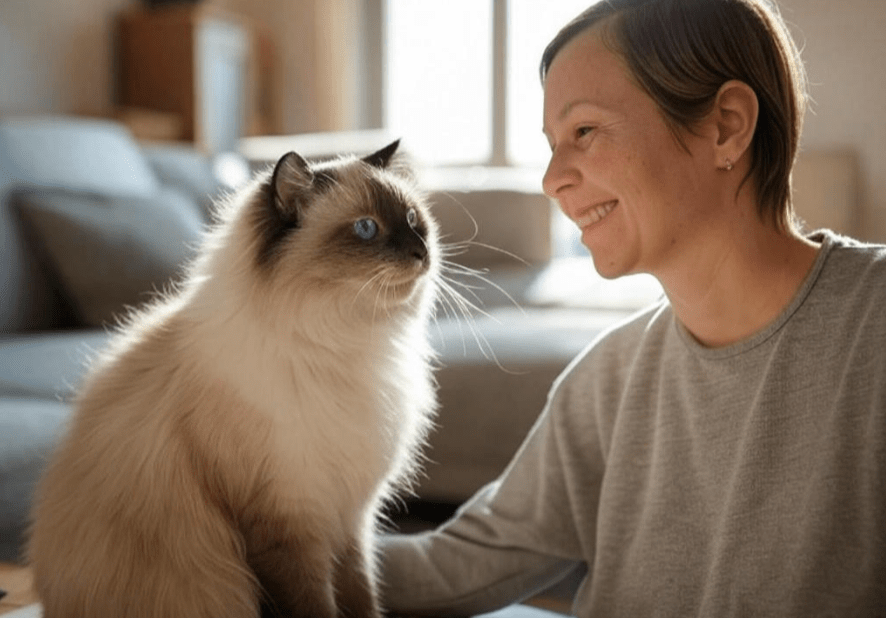
Ragdoll cats are known for their striking blue eyes, silky fur, and affectionate nature. If your Ragdoll cat follows you everywhere, you’re not alone—this behavior is a hallmark of the breed. These gentle giants are often described as “puppy-like” due to their loyal and social tendencies. But why does your Ragdoll shadow your every move? This article dives deep into the reasons behind this behavior, exploring their personality, instincts, and needs to help you understand your feline companion better.
The Unique Personality of Ragdoll Cats
Ragdolls are a breed celebrated for their docile and placid temperament. Unlike more independent breeds, Ragdolls thrive on human interaction and form strong bonds with their owners. This attachment often manifests as following their humans from room to room, whether you’re cooking in the kitchen or relaxing on the couch.
Affectionate and Social Nature
Ragdolls are inherently social creatures. They crave companionship and view their owners as part of their family. This desire for closeness is one reason your Ragdoll cat follows you everywhere. They enjoy being near you, not just for attention but also for the comfort of your presence. Their affectionate nature makes them more likely to seek out interaction than other breeds, such as the solitary Maine Coon or the aloof Siamese.
Puppy-Like Behavior
The term “puppy-like” is often used to describe Ragdolls because they exhibit behaviors similar to dogs. They may greet you at the door, follow you around the house, or even learn simple tricks. This loyalty and devotion mean your Ragdoll sees you as their trusted companion, making it natural for them to stay close by.
Why Does Your Ragdoll Cat Follow You Everywhere?
There are several reasons your Ragdoll cat might be your constant shadow. Understanding these can help you strengthen your bond and ensure your cat’s needs are met.
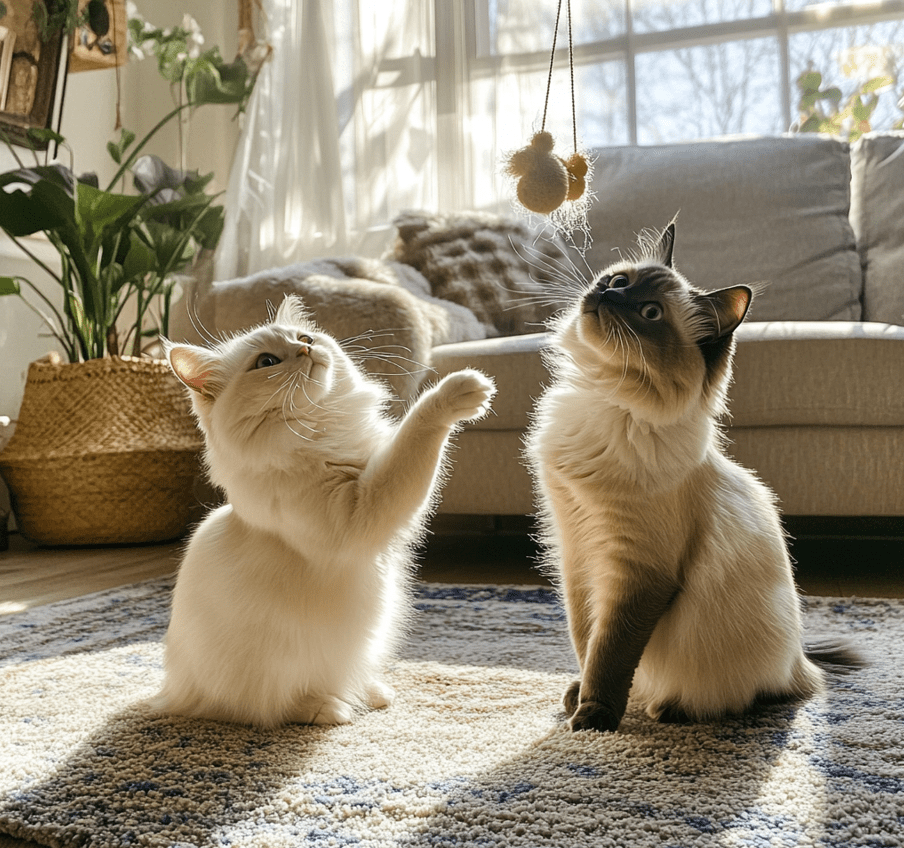
1. Seeking Attention and Affection
Ragdolls love attention. If your cat follows you, they may be hoping for pets, playtime, or a cozy lap to curl up in. Their desire for affection is a key driver of this behavior. For example, when you move from the living room to the bedroom, your Ragdoll might trail behind, anticipating a chance to snuggle.
Tip: Set aside dedicated time each day for interactive play or cuddles. This can satisfy their need for attention and may reduce excessive following if it becomes overwhelming.
2. Curiosity and Exploration
Ragdolls are curious by nature. Your movements around the house—whether you’re opening a cupboard or typing on your laptop—pique their interest. They may follow you to investigate what you’re doing or to be part of the action. This curiosity is especially strong in younger Ragdolls or those in stimulating environments.
Example: If you’re in the kitchen preparing food, your Ragdoll might hop onto the counter, not just for a potential treat but to observe your activities.
3. Bonding and Trust
Ragdolls form deep emotional bonds with their owners. Following you is their way of reinforcing this connection. In the wild, cats stay close to those they trust for safety and companionship. Your Ragdoll views you as their safe haven, and staying near you strengthens their sense of security.
Insight: This behavior is a compliment—it means your cat trusts you completely and enjoys your company.
4. Routine and Habit
Cats are creatures of habit, and Ragdolls are no exception. If your cat has learned that following you leads to positive outcomes—like treats, play, or attention—they’re likely to repeat the behavior. For instance, if you feed your Ragdoll every morning in the kitchen, they may start following you there as soon as you wake up.
Tip: Be consistent with routines to provide your Ragdoll with a sense of predictability, which can reduce anxiety-driven following.
5. Hunger or Basic Needs
Sometimes, your Ragdoll’s shadowing is a gentle nudge to remind you of their needs. They might follow you to the kitchen if they’re hungry or to the litter box area if it needs cleaning. Ragdolls are polite communicators, often using their presence rather than vocalization to get your attention.
Checklist:
-
Is their food bowl full?
-
Is their water fresh?
-
Is the litter box clean?
-
Do they have access to toys or scratching posts?
6. Boredom or Lack of Stimulation
Ragdolls are intelligent and need mental and physical stimulation. If they’re bored, they may follow you in search of entertainment. This is especially common in indoor cats who rely on their owners for enrichment.
Solution: Provide interactive toys, puzzle feeders, or a cat tree to keep your Ragdoll engaged. Regular play sessions with feather wands or laser pointers can also help burn off excess energy.
7. Separation Anxiety
While rare, some Ragdolls may follow their owners due to separation anxiety. This is more likely if your cat becomes distressed when you leave the house or displays other signs, such as excessive vocalization or destructive behavior. Their strong attachment to you can make them anxious when separated.
Signs of Separation Anxiety:
-
Clinginess when you’re home
-
Meowing or pacing when you’re about to leave
-
Inappropriate elimination or scratching in your absence
Solution: Consult a veterinarian or feline behaviorist if you suspect anxiety. Gradual desensitization to your absences and enriching their environment can help.
Is It Normal for a Ragdoll Cat to Follow You Everywhere?
Yes, it’s entirely normal for a Ragdoll to be your constant companion. Their breed traits—affection, loyalty, and sociability—make this behavior typical. However, the intensity of their following can vary based on individual personality, environment, and circumstances.
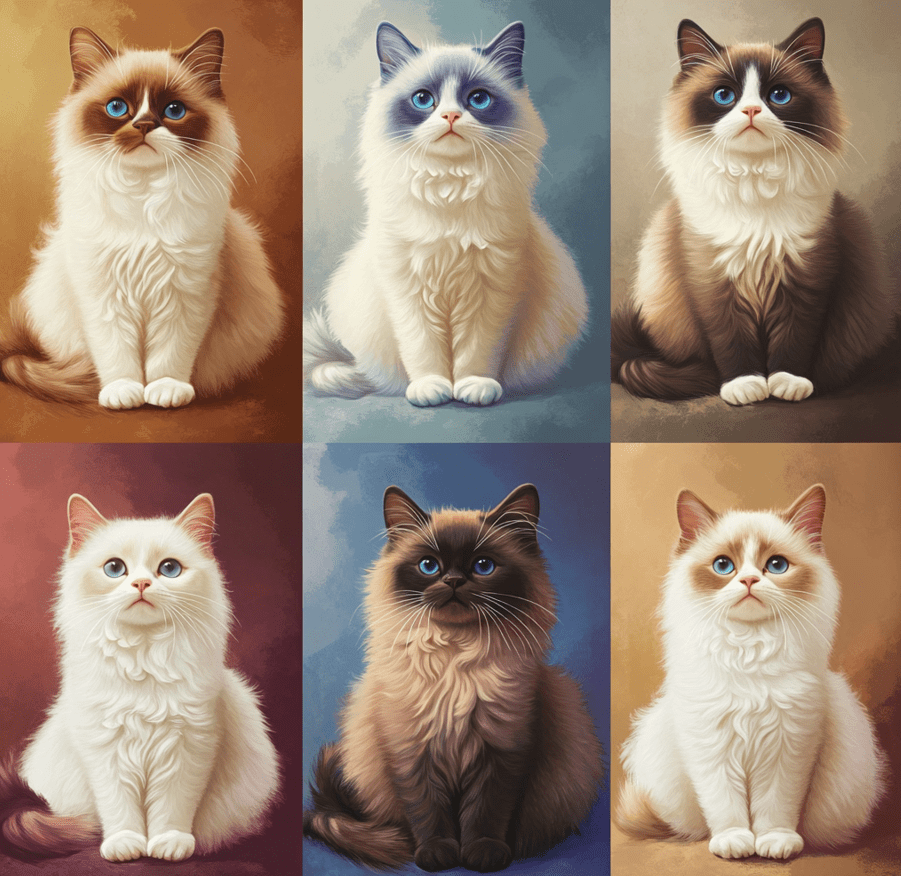
When to Be Concerned
While following is usually harmless, excessive clinginess could indicate an underlying issue. Watch for these red flags:
Sudden Changes: If your Ragdoll wasn’t clingy before but now won’t leave your side, it could signal stress, illness, or a change in their environment.
Physical Symptoms: Lethargy, appetite changes, or grooming issues alongside clinginess warrant a vet visit.
Disruptive Behavior: If their following interferes with your daily life (e.g., tripping you or preventing you from working), it may require intervention.
Action: Schedule a vet checkup to rule out medical issues. If your cat is healthy, consider consulting a feline behaviorist for tailored advice.
How to Manage Your Ragdoll’s Following Behavior
If your Ragdoll’s shadowing is overwhelming or you want to encourage more independence, try these strategies:
1. Enrich Their Environment
A stimulating environment can keep your Ragdoll entertained when you’re busy. Consider:
Cat Trees: Provide vertical space for climbing and lounging.
Window Perches: Allow them to watch birds or outdoor activity.
Toys: Rotate toys to keep things fresh, such as balls, tunnels, or electronic gadgets.
2. Establish Boundaries
If you need space, gently teach your Ragdoll boundaries. For example:
Use a specific cue (like “stay”) when you want them to remain in one area.
Reward them with treats for staying on a designated mat or bed.
Avoid reinforcing clingy behavior by not always responding with attention.
3. Provide Companionship
If you’re often away, your Ragdoll may follow you more intensely when you’re home. Consider:
Another Pet: A second cat or a cat-friendly dog can provide companionship, though introductions must be gradual.
Pet Sitters or Visitors: Regular interaction with others can reduce over-reliance on you.
4. Positive Reinforcement
Reward your Ragdoll for independent behavior. For example, give treats or praise when they play alone or rest in their own space. This encourages them to feel confident without constant proximity to you.
Fun Facts About Ragdoll Cats
To deepen your appreciation for your Ragdoll’s behavior, here are some fascinating facts about the breed:
Origin: Ragdolls were developed in the 1960s by breeder Ann Baker in California, who crossed a white Persian with other cats to create their unique traits.
Size: Ragdolls are one of the largest domestic cat breeds, with males weighing up to 20 pounds.
Floppiness: Their name comes from their tendency to go limp when picked up, resembling a ragdoll.
Color Variations: Ragdolls come in patterns like colorpoint, mitted, and bicolor, with shades including seal, blue, chocolate, and lilac.
How Ragdolls Compare to Other Breeds
To put your Ragdoll’s behavior in context, here’s how they compare to other popular breeds:
Ragdoll vs. Siamese: Siamese cats are vocal and social but more independent, while Ragdolls are quieter and more physically affectionate.
Ragdoll vs. Maine Coon: Maine Coons are friendly but less clingy, often preferring to explore than follow.
Ragdoll vs. Persian: Persians are calm but less interactive, while Ragdolls actively seek human connection.
This comparison highlights why your Ragdoll cat follows you everywhere—their blend of sociability and loyalty is unmatched.
Strengthening Your Bond with Your Ragdoll
Your Ragdoll’s following behavior is an opportunity to deepen your relationship. Here are ways to make the most of their affectionate nature:
Interactive Play: Engage in daily play sessions to satisfy their physical and mental needs.
Grooming: Regular brushing not only keeps their coat healthy but also serves as bonding time.
Training: Teach simple commands like “come” or “sit” using treats. Ragdolls are eager learners.
Safe Spaces: Create cozy spots where your Ragdoll can relax near you, like a blanket on your desk or a bed by your chair.
Conclusion

Your Ragdoll cat follows you everywhere because of their unique blend of affection, loyalty, and curiosity. This behavior reflects their deep bond with you and their desire to be part of your world. By understanding the reasons behind their shadowing—whether it’s seeking attention, reinforcing trust, or simply staying entertained—you can better meet their needs and strengthen your connection.
If their following becomes excessive, use enrichment, boundaries, and positive reinforcement to encourage balance. Most importantly, cherish this trait as a sign of your Ragdoll’s love and trust. With their puppy-like devotion and gentle nature, Ragdolls truly are one-of-a-kind companions.
For more tips on caring for your Ragdoll or addressing specific behaviors, consult your veterinarian or a feline behaviorist. Your Ragdoll’s love for following you is a gift—embrace it and enjoy the journey of being their favorite human.


